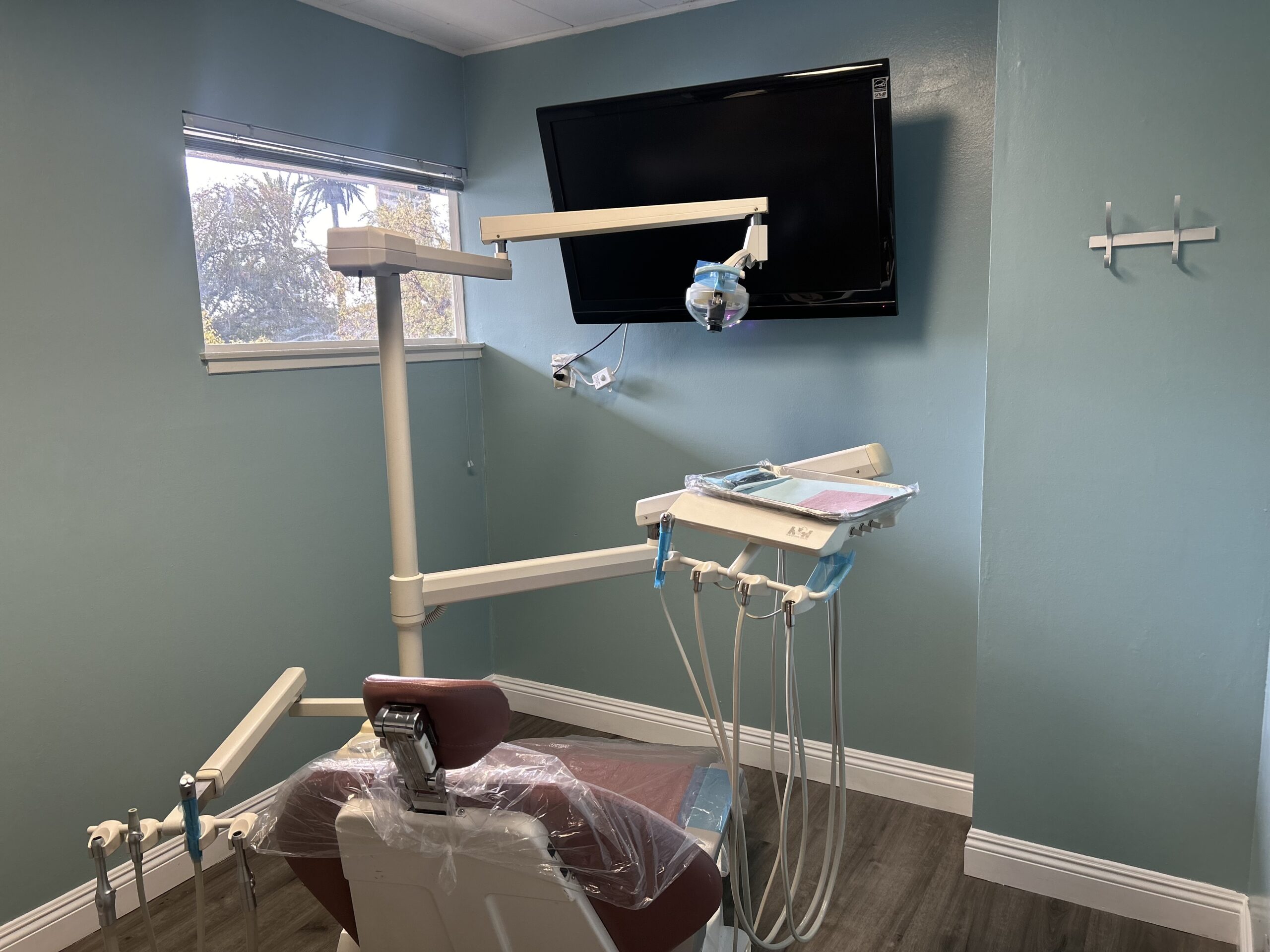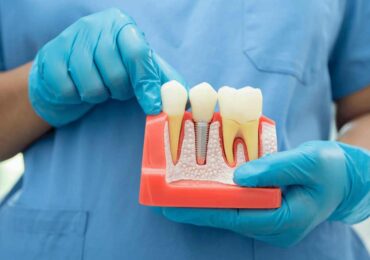It is practically hard to avoid getting a cavity in one’s lifetime. 90% of the population experiences fear and frustration as a result of the pain and expense associated with cavities. According to the Centers for Disease Control and Prevention, more than 40% of adults have reported dental pain in the previous year, and more than 80% will have had at least one cavity by the age of 34.
Cavities will not improve on their own. As a result, dental fillings are virtually always required in most cases. Although tooth fillings are dependable restorative options, they require care and replacement over time.
Why should I get dental fillings replaced? When shall I receive the replacement? How long will this last? That is what you will.
Types of Dental Fillings
Choosing the right filling for your tooth depends on various factors, including color, material, durability, cost, and individual needs. Here’s a breakdown of five common types of fillings:
Amalgam Fillings
Color: Silver
Material: 50% mercury, 35% silver, and 15% tin, copper, and other metals
Pros:
- Long-lasting and hard-wearing
- Has been used safely for over 150 years
- Economical
Cons:
- Not recommended for pregnant or breastfeeding women, children under 15, or baby teeth
- Not aesthetically pleasing due to its silver color
Lifespan: 15-20 years
Composite Fillings
Color: Tooth-colored
Material: Powdered glass quartz, silica, or other ceramic particles added to a resin base
Pros:
- More aesthetically pleasing than amalgam
- Dentists can match the shade to your natural teeth
- Bonds directly to the tooth
Cons:
- May not be as hard-wearing as amalgam
- Can stain over time
Lifespan: 5-7 years
Glass Ionomer Fillings
Color: Tooth-colored
Material: Glass powder and organic acid
Pros:
- Releases fluoride to help prevent future decay
- Suitable for children and people with sensitive teeth
Cons:
- Weaker than other filling materials
- Usually only used on baby teeth or non-biting surfaces
Lifespan: 5-10 years
Porcelain Inlays
Color: Tooth-colored
Material: Composite material, gold, or tooth-colored porcelain
Pros:
- Very hard-wearing and long-lasting
- Excellent aesthetics
Cons:
- Most expensive option
- Requires more complex procedure compared to other fillings
Lifespan: 5-20 years or more
Particular situations may affect the longevity of your dental fillings.
Taking a lot of sugar and acidic food may cause degeneration along the edges of the filling. Failing to floss and brush your teeth regularly allows plaque and germs to accumulate, weakening the filling and causing degeneration.
If your tooth is hit hard or injured, the filling could break. Similarly, grinding or clenching your teeth while sleeping may cause excessive strain on the filling, leading to cracking.
Reasons Why Dental Fillings Fail
Even though fillings can last a long time, they will only be perfect due to the abovementioned factors. With time, they can wear, chip, crack, or dislodge, leaving gaps for food and bacteria entry, necessitating replacement.
A retrospective study was conducted about decision criteria for the replacement of fillings. The study presents several significant conclusions about filling upkeep and longevity. For instance, although amalgam fillings often last longer, secondary caries can eventually require replacing either type of filling.
While the study provides valuable information for dentists identifying fillings potentially needing replacement, it only implicitly suggests why those fillings might fail. However, we can infer some causes based on the given criteria:
Age of the Filling: Over time, materials wear down, weaken, and potentially leak, creating an entry point for bacteria.
Imperfections: Cracks and gaps weaken the seal and compromise the barrier against bacteria and decay.
Visible Decay: This indicates the breakdown of tooth structure around the filling, often caused by insufficient hygiene or weakened tooth structure.
Pain in Composite Fillings: This could suggest inflammation caused by trapped bacteria around the filling or nerve irritation within the tooth.
Tools such as X-rays and other diagnostic instruments are vital for determining the problems underneath fillings, and comprehensive clinical exams should closely follow them. Discomfort and visual signals can also indicate potential issues, especially with composite fillings.
In other words, regular dental checkups are super important. Why? Because dentists can catch problems with your fillings early before they become more significant. This saves you time, money, and pain down the line.
What Happens When You Don’t Replace Your Filling?
A filling that has overlapping margins, is cracked, or has deteriorated lessens its ability to protect the tooth from food particles and bacteria. This raises the likelihood of fresh decay developing beneath or around the filling, which could result in additional injury to the dental structure.
As the study above suggested, cavities developed around existing fillings—were common, particularly in larger amalgam and composite fillings. If secondary caries are not treated, they may worsen and require more invasive dental procedures like root canal therapy or tooth extraction, which could cause more extensive damage to the tooth.
Pain perception is a possible sign of decay in teeth filled with composite material. Unchecked decay can cause sensitivity, pain, and discomfort in the teeth, affecting a person’s ability to chew and cause discomfort in the mouth.
Untreated decay can generally deteriorate oral health and cause additional dental problems like gum disease, abscesses, and tooth loss. This may negatively affect one’s quality of life, self-esteem, and functional issues.
Visible decay around or beneath a filling can make the smile less appealing. This can be especially problematic if you have fillings in noticeable places in your mouth.
How Often Do You Need Filling Replacements?
The number of replacements depends on tooth health, material, and placement. As your dentist conducts regular checkups on your existing fillings, he may suggest a replacement before it causes more damage. When you experience tooth sensitivity while brushing or while eating hot or cold food, it is a sign that a filling needs to be replaced. Another sign is when a filling is worn, and pain is experienced.
Remember that your type of dental filling also determines when it needs to be replaced. As mentioned earlier, composite and glass ionomers must be replaced every 5-10 years, while amalgam and porcelain need to be replaced every 5-20 years.
Dental Filling Alternatives
If you are not okay with repeated replacements, other potential alternatives exist, such as dental crowns, implants, or bridges. Here’s a breakdown of three common alternatives:
Crowns
Durability: 5-15 years
Appearance: Mimics the original shape and color of the tooth
Pros:
- Can correct various imperfections like cracks, chips, and misshapen teeth
- Close gaps between teeth
- Offers strong protection for weakened teeth
Cons:
- Requires significant tooth removal for placement, which is irreversible
- May need replacement over time
Dental Implants
Durability: 20-25 years or more
Appearance: Can provide a natural look and feel of a real tooth
Pros:
- Permanent solution for replacing missing teeth
- Looks and feels just like natural teeth
- Promotes bone health by stimulating jawbone growth
- No damage to surrounding teeth
Cons:
- Most expensive option
- Highly invasive because it requires surgical procedure with healing time
- Not suitable for individuals with specific health conditions
Bridges
Durability: 10-20 years
Appearance: Natural-looking bridge replacing one or more missing teeth
Pros:
- Faster treatment option compared to implants
- Can replace multiple missing teeth at once
Cons:
- Requires removal of healthy tooth structure from surrounding teeth to support the bridge
- Increases risk of decay under the bridge if not properly cleaned
- Not as durable as implants
What Happens During Filling Replacement?
Are you nervous about that painful thought when getting that filling replacement? Don’t be scared; it is not as painful as you thought it would be.
During the first stage of filling replacement, your dentist numbs the area with local anesthesia. It numbs the area around the tooth being treated, reducing or eliminating pain during the procedure.
The old filling and any decayed tooth structure are carefully removed. The objective is to clear out any compromised material and prepare the tooth for the new filling.
The tooth is then thoroughly cleaned and prepared for the new filling. This may involve shaping the tooth or applying a bonding agent to help the new filling adhere securely.
After cleaning, your dentist places the new filling material into the prepared tooth, shaping it to fit the contours of your tooth correctly. The filling material used depends on factors like the tooth’s location and your preferences.
Your dentist polishes the filling to ensure a smooth surface and comfortable fit with your bite. The dentist may also check your bite to ensure it’s properly aligned with the new filling. Necessary adjustments may be applied to ensure comfort and proper function.
Tooth sensitivity after a filling isn’t uncommon, but it’s temporary. You might feel discomfort while chewing or sudden sharp sensations. If sensitivity persists beyond this timeframe, contacting your dentist to check and possibly replace the filling is essential.
Need Dental Filling Replacement in Upland, CA?
Our primary goal in this article is to promote preventive dental care and raise awareness about the importance of replacing missing fillings.
Recognizing when a filling needs to be replaced and seeking prompt dental care are crucial steps in preventing or minimizing more damage, discomfort, and issues. When people select a replacement, their quality of life is improved in terms of overall comfort, functionality, and aesthetics.
Our dentist may offer individualized advice and suggestions based on your requirements. Contact us if you need any help or more information. We always appreciate hearing from you and are here to help you on your path to the best possible dental health and well-being.
At Upland Dental Practice, we understand that every smile is unique. We offer personalized consultations and treatment plans tailored to your needs and concerns. Whether you have questions about fillings and crowns or want to maintain optimal oral health, we’re here to guide you with expert advice and compassionate care.
Feel free to contact us for a consultation or to clarify any concerns. We’re always happy to help you achieve the healthiest and most beautiful smile possible.
Recent Articles
- 1
- 2
- 3
- 4
- 5
- 6
- 7
- 8
- 9











